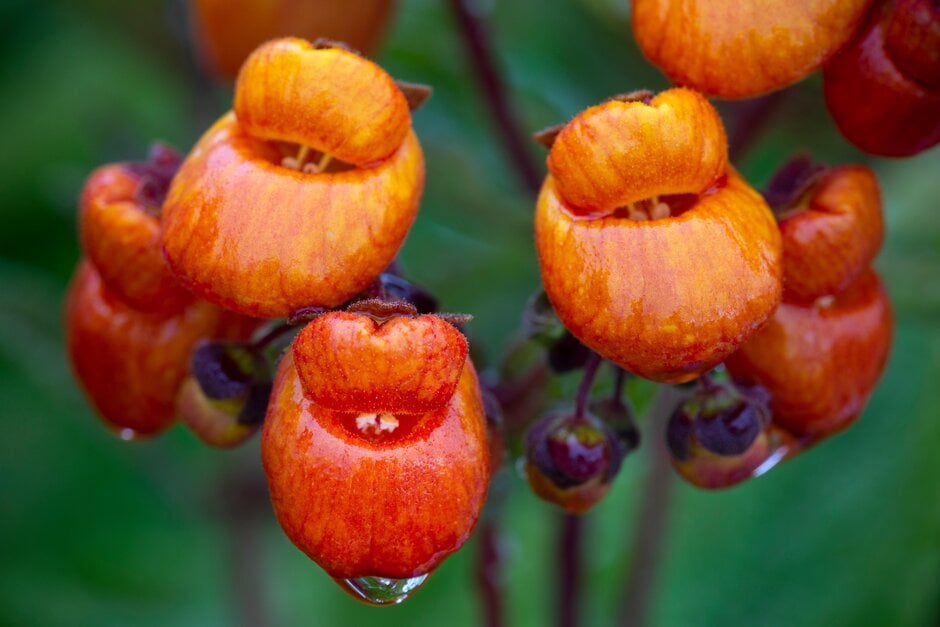Calceolaria (Fruticohybrida Group) 'Kentish Hero'
slipper flower 'Kentish Hero'
A deciduous, shrubby perennial with dark green foliage and unusual, inflated flowers which emerge red then turn orange. These appear in clusters above the foliage in spring through to the autumn

Buy this plant
Size
Ultimate height
0.1–0.5 metresTime to ultimate height
1–2 yearsUltimate spread
0.1–0.5 metresGrowing conditions
Moisture
Moist but well–drained, Well–drainedpH
Acid, NeutralColour & scent
| Stem | Flower | Foliage | Fruit | |
| Spring | Red Orange | Green | ||
|---|---|---|---|---|
| Summer | Red Orange | Green | ||
| Autumn | Red Orange | Green | ||
| Winter |
Position
- Full sun
- Partial shade
Aspect
East–facing or South–facing or West–facing
Exposure
Sheltered Hardiness
H2Botanical details
- Family
- Calceolariaceae
- Native to GB / Ireland
- No
- Foliage
- Deciduous
- Habit
- Bushy
- Genus
Calceolaria can be annuals, biennials, perennials or shrubs, with opposite leaves or basal rosettes, and solitary or clustered, slipper-like yellow, red or purple flowers
- Name status
Accepted
How to grow
Cultivation
Outdoors, grow in light, moderately fertile, acidic soil in sun or partial shade. Flowering is best in cool, moist conditions. Water freely and apply a balanced liquid fertiliser every 2 weeks. To overwinter plants, lift them before the first frosts and put them in pots in a frost-free greenhouse
Propagation
Propagate by seed sown under glass in early spring
Suggested planting locations and garden types
- City and courtyard gardens
- Cottage and informal garden
- Gravel garden
- hanging basket
- Houseplants
- Patio and container plants
- Rock garden
- Bedding
- Conservatory and greenhouse
- Flower borders and beds
- Garden edging
Pruning
Deadhead to prolong flowering
Pests
Diseases
May be susceptible to grey moulds
Get involved
The Royal Horticultural Society is the UK’s leading gardening charity. We aim to enrich everyone’s life through plants, and make the UK a greener and more beautiful place.